DIY and use of tackle mandula for fishing
Jig tackle is often used to catch predatory fish species. One of them - mandula - is interesting for its catchiness and ease of manufacture. Jiga is a dance. Apparently, by analogy with it, "dancing" gear is called jig gear. How a multicolored mandula dances, what kind of fish is caught with this tackle, how to make it with your own hands - this information will certainly be useful to novice anglers.
Shop tackle is quite expensive, and given the fact that when fishing for predatory fish, it often comes off, in order to save money, it is quite reasonable to start making a mandula with your own hands. The process is creative, but not difficult. Having prepared a sufficient number of baits, you can safely go for zander, perch or pike.
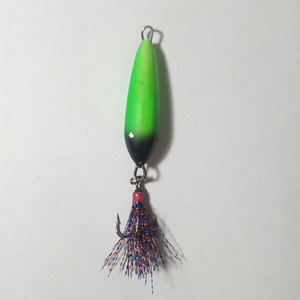
The basis of this tackle is made up of colored parts, which, when assembled, can imitate the movements of small fish under water. No special costs required - all materials can be found at home if you look among unnecessary things. As a last resort - ask your neighbor.
Materials and tools
The material for creating the tackle can be old things made of polyurethane or a material similar to it. Beach slippers will go, bathroom rug, toys and other inventions of modern industry.
The color of the future tackle should not be too bright, although the issue is controversial. Pastel colors will do. Materials to be used:

To make a quality fishing lure, you need some simple tools. You need to prepare:
- stationery knife;
- awl;
- round nose pliers;
- scissors;
- pliers;
- sandpaper;
- nippers.
Having prepared everything you need, you can safely start making a mandula at home.
Work order
By turning on your imagination, you can choose a color scheme similar to the color of small freshwater fish, but not necessarily. The main thing is that the color does not scare away, but attracts the predator.
The resemblance to fry is achieved by the sequence of assembling parts of various shades. The ratio of the length and diameter of the bait must be believable. The procedure for making tackle:
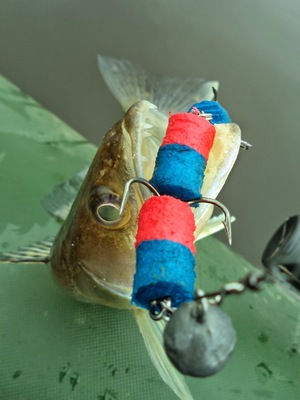
The second part of the mandula is done in the same way. Before attaching the hook, a lurex panicle is attached to it with the help of a red cambric. It will hide the sting of the hook and attract fish. Both parts of the mandula are connected through the ears.
The fishing tackle is ready. It remains to test it in the reservoir.
Catching a predatory fish
The design features of the mandulas endow these baits with efficiency. When falling to the bottom of the reservoir, they continue to sway, imitating the movements of a fish. This attracts the predator, which rushes to the bait almost immediately. Depending on the body of water and the type of fish to be hunted, you can determine how to catch the mandula correctly, with maximum efficiency.
Pike perch and mandula
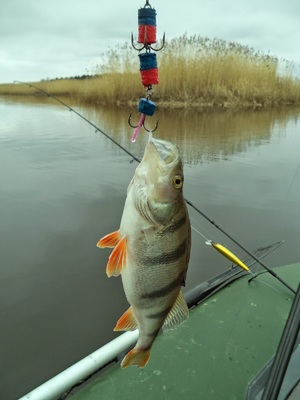 Classic zander fishing with live bait or trolley is a sporty and exciting activity. It is no less, and maybe more interesting, to catch this fish with homemade tackle. Do-it-yourself mandula for pike-perch should consist of at least two parts, but it is better if there are three of them.
Classic zander fishing with live bait or trolley is a sporty and exciting activity. It is no less, and maybe more interesting, to catch this fish with homemade tackle. Do-it-yourself mandula for pike-perch should consist of at least two parts, but it is better if there are three of them.
Fishing tactics are effective, in which step wiring is used. The bait is thrown and waited for it to sink to the bottom. After that, the line is pulled up by making 2-3 turns of the coil. Then a pause of 3-4 seconds and again posting in 2-3 turns.
With a bad bite, when the pike perch is picky, the pauses are increased to 10 seconds. This method often works, and the fish grabs the bait in the pause. The activity of the pike perch will be enhanced by the impregnation of the mandula with a liquid flavoring agent, for example, fish oil.
On a clean bottom without debris and snags, bottom dragging is effective. The bait is evenly pulled at a low speed, periodically making stops for 5-10 seconds.
When fishing from a boat, tossing is good. Their essence is that the mandula is thrown into a deep place, and then rises in sharp jerks. In this case, the bait moves vertically. For this, a three-meter spinning rod with a line casting of 10 meters is suitable.
Pike hunting
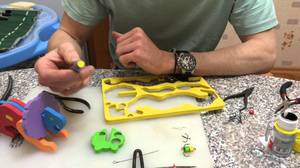 Do-it-yourself pike mandula is made in the same way as for pike perch. It can be larger if large specimens are expected to be caught.
Do-it-yourself pike mandula is made in the same way as for pike perch. It can be larger if large specimens are expected to be caught.
Fishing with a mandula is good where the bottom is sandy, shell or pebble, without large snags and household debris.
More often pike is caught at the bottom than in the water column, but once at a time it is not necessary. Use uniform, jerky and stepped wiring. Its speed depends on the activity of the predator - the more active the pike, the higher the speed of tracking.
During pauses, the mandula creates the impression that a fry is feeding at the bottom, this, naturally, attracts a predator. Even with a small current, all parts of the bait play, drawing a very believable picture. The faster the flow, the longer the pause. Sometimes you have to wait up to 30 seconds.
The vertical guidance from the boat is the same as when fishing for walleye.
Catching perch
Small mandulas measuring 3 to 5 cm in length and weighing about 10 grams are suitable for perch fishing. Models consist of 2-3 segments. Instead of lurex, you can attach red threads or silicone fringes.
If the activity of the perch is low, mandula is ideal. She will seduce even a well-fed fish. Staggered wiring is very effective.
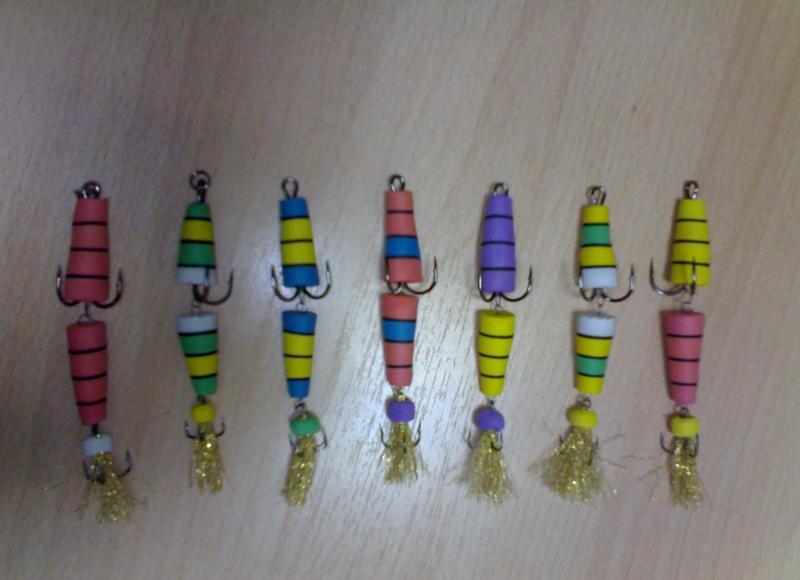
In stagnant bodies of water, it is enough to find a clean patch of the bottom for fishing to be successful. If the bottom is littered, then the wiring can be raised so as not to cling to possible obstacles.
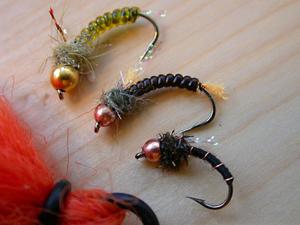 To begin with, they make several even postings without pauses and twitching. If the technique does not work, use the stepwise option. The wiring technique is no different from that when fishing for pike perch and pike.
To begin with, they make several even postings without pauses and twitching. If the technique does not work, use the stepwise option. The wiring technique is no different from that when fishing for pike perch and pike.
Ideally, try all kinds of postings. At this point, how lucky - either there is biting or not. You can also irritate a passive perch with this technique: with stepped wiring, only half a turn of the coil is done, and then a short pause. Mandula moves along the bottom in small jerks. Perhaps the success of such a posting is that the perch takes the mandula for a wounded fry, but this is only an assumption.
Trying different wiring and colors of mandulas, it is not difficult to decide on the best option for a particular reservoir. Experience will come with practice.
Attention, only TODAY!
